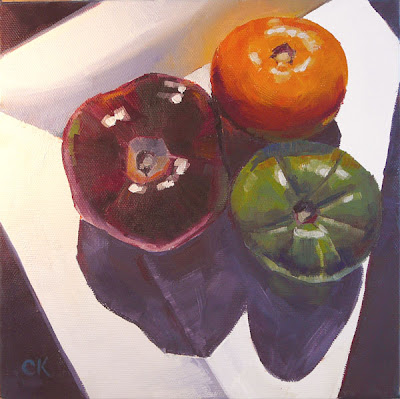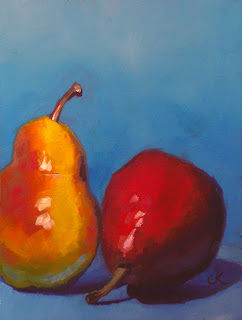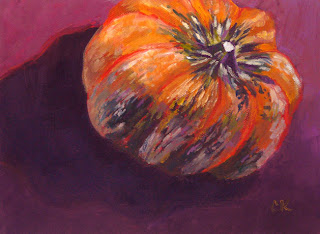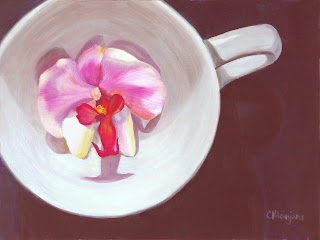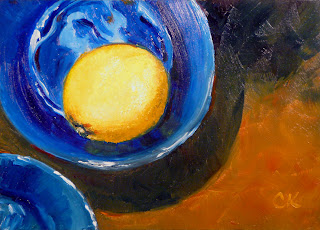
NFS. I've been painting with water-soluble oils (or "miscible"). I've pretty much found them to be easy to use. I tried three brands, and here's my assessment (today's lesson: comparing water-soluble oils):
- Winsor & Newton: I use these and like them, but they're kind of stiff out of the tube.
- Holbein Duo: Nice and buttery, but don't mix well with water. Sort of like mixing water with butter. Would probably be good for palette knife work, which I should try one of these days.
- Grumbacher Max: Dry too fast. Like, you can't work them the next day.
I tried using medium and I couldn't get the feel right. The paint ended up slipping on the surface, if that makes sense.
So I decided to try more traditional oils. Preferring to avoid the whole issue of toxic junk, I ran across M. Graham oils. They're diluted using walnut oil, which is safe. They're also compounded out of very intense pigments.
So, what happened? Well, I wasn't used to having a layer of paint, then gently layering a thinner layer over it. It's like painting with whipped cream or something. It's kind of alien, especially to someone who recently took a Carol Marine workshop: My gosh, she lays down the color in strokes that are confident of themselves. And I can't do that with the M. Grahams.
Then again, I seem to be looser, and the colors stay open longer (i.e., moist, so you can move them around). Now, in order to paint the tomato stems, I had to go in with my little wipe-out tool and clear the strips where I wanted the stems to go.
Also, clean-up was a pain. Tomorrow's painting was done with the same paint and the same brushes, and was also looser and loads of fun, but, boy, getting the paint out of the brushes was difficult compared with water solubles.
Conclusions? Beats me. The pigments in these seem to be stronger, but I don't know that that's because they're oil soluble; maybe they're just made that wayl. But, OK, maybe with softer paint I let myself relax a bit? Not sure.
I'll keep playing and posting. This art crap is really subtle, isn't it?
 Sold.
Sold.


